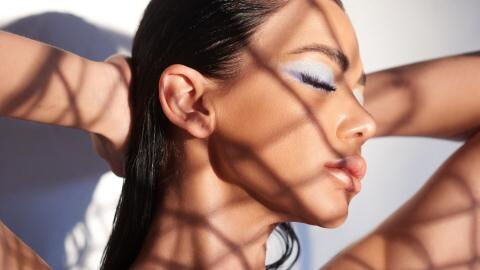Foundation is a fickle thing; it’s one of the few makeup products designed to look as natural as possible. But, one wrong shade can easily mean the difference between looking like a ghost or an Oompa Loompa.
Discover our latest podcast
With undertones, different textures, and levels of coverage to consider, many of us go from our teens well into our twenties still searching for the right foundation. Sometimes we find a bottle that seems perfect at first glance but ends up missing the mark for everyday wear or just doesn’t have the finish we dreamed of. And, with the popularity of online shopping, shade matching has gotten all the more daunting.
But, finding the perfect foundation doesn’t need to be a pipe dream.
When buying a foundation, there are a few factors to consider that will help you find your best match and get the most out of your makeup and your money.
How much coverage do you want?
There are three types of foundation coverage: light, medium and full coverage.
Light coverage is the most skin-identical and is perfect for those that don’t generally like the feeling of makeup on their skin. It’s sheer, breathable, and is designed to let features such as freckles shine through.
Medium coverage foundation is considered the most popular and versatile because it’s buildable. One layer of medium coverage will even out your complexion while still looking natural on the skin. But, a second or third layer will start to cover any unwanted spots. You can even mix your medium coverage foundation with moisturiser to sheer it out, making it the perfect transitional summer to winter product.
On the other hand, a full coverage foundation almost acts like a second layer of skin, completely evening out the skin tone and hiding any blemishes. Full coverage is often the heaviest type of foundation and is commonly used by those taking photos or making television appearances. It’s also the most complicated type of foundation to colour match.
There’s no right or wrong answer when it comes to choosing a foundation coverage, it’s just a matter of how you like your makeup to feel and perform.
Do you want a matte or glossy finish?
The finish of your foundation is another choice left to personal preference. A glossy finish is the best choice for those who like a more natural or glowy looking foundation. Meanwhile, many people with oilier skin often choose to combat this with a matte finish.
Identifying your correct shade
Identifying your undertones is one of the most essential steps and can help you narrow down your foundation choices. There are generally three categories: warm, cool or neutral. Warm undertones are more gold, whereas cooler undertones are more pink or red. Neutral, as you probably guessed, is a mixture of both.
There are a few ways to determine your undertone, but the most common is by looking at your veins. If your veins are generally blue or purple, that’s a good indicator that you have a cool undertone, while green veins point to a warmer one. If your veins are both blue and green, you most likely have a more neutral undertone.
Of course, the best way to find the right foundation shade is to test them out. Often makeup stores have artists on hand that can help you find a foundation match, but you can also do it yourself. Taking the three shades that look closest to your complexion, apply a swatch of each to your jawline down to your neck blend them out. The least detectable shade is usually the right one. Celebrity makeup artist Frederick Sanders told Glamour:
The foundation should match the side of your face and your neck to prevent you from looking like you're wearing a mask.
How does your foundation look after a few hours?
Before investing in a £100 bottle of foundation, take it on a test run and see how it holds up over time. While some foundations appear to be perfect in the bottle, they might irritate your skin or oxidise on the face, giving it that dreaded orange tinge.
The colour of your foundation can also change depending on your skin’s pH and chemistry, making it all the more critical to time-test your makeup.
It’s all about skin prep
Sometimes your foundation could have the perfect shade, finish and coverage, and it could still look wrong on the skin. This is because your makeup will only be as good as the skin underneath. Skincare is a crucial component of makeup. A good routine including regular exfoliation and moisturising will help ensure your foundation won’t apply patchy or stick to dry or dead skin.
Using a generous layer of primer before applying your makeup will also create a barrier between your skin and your foundation, which can help it glide on more evenly and provide longer wear.















